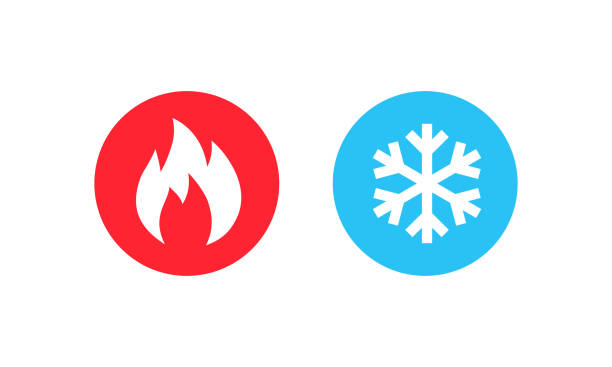
Hot Wax vs. Cold Wax: Your Complete Guide
Hot Wax vs. Cold Wax: Which is Better for Hair Removal?
When it comes to hair removal, both hot wax and cold wax have their own unique advantages and disadvantages. In this comprehensive guide, we'll explore the differences between hot wax and cold wax, their respective benefits and drawbacks, and help you determine which method is best suited for your needs and preferences.
Understanding Hot Wax
Hot wax is a type of wax that is heated to a liquid state before being applied to the skin. It is typically applied in a thin layer and allowed to harden before being removed, taking the hair with it.

Advantages of Hot Wax
- Effective on coarse and stubborn hair: Hot wax is particularly effective at removing coarse and stubborn hair, such as that found on the legs and bikini area.
- Provides a smooth finish: Hot wax can provide a smoother finish compared to cold wax, as it adheres more closely to the skin.
- Suitable for sensitive areas: Hot wax can be used on sensitive areas, such as the underarms and face, as it is applied in a thinner layer and can be removed more gently.
Disadvantages of Hot Wax
- Requires heating: Hot wax requires heating to a specific temperature before it can be applied, which can be time-consuming and requires special equipment.
- Potential for burns: If the wax is heated to an excessively high temperature, it can cause burns or discomfort when applied to the skin.
- Messier application: Hot wax can be messier to apply compared to cold wax, as it can drip or spill if not applied carefully.
Understanding Cold Wax
Cold wax, also known as strip wax, is a type of wax that is applied to the skin at room temperature. It is typically applied to a strip of cloth or paper, which is then pressed onto the skin and quickly removed, taking the hair with it.

Advantages of Cold Wax
- Convenient application: Cold wax is easier to apply compared to hot wax, as it does not require heating and can be used straight out of the package.
- Less messy: Cold wax is generally less messy to apply compared to hot wax, as it does not drip or spill as easily.
- Suitable for small areas: Cold wax is particularly well-suited for removing hair from small areas, such as the upper lip and eyebrows.
Disadvantages of Cold Wax
- Less effective on coarse hair: Cold wax may not be as effective at removing coarse or stubborn hair compared to hot wax.
- Can cause more discomfort: Some people find that cold wax causes more discomfort or pain during the hair removal process compared to hot wax.
- May not provide as smooth a finish: Cold wax may not adhere as closely to the skin as hot wax, which can result in a slightly less smooth finish.
Factors to Consider When Choosing Between Hot Wax and Cold Wax
When deciding between hot wax and cold wax, consider the following factors:
1. Hair type
If you have coarse or stubborn hair, hot wax may be the better option. If you have fine or soft hair, cold wax may be sufficient.
2. Skin sensitivity
If you have sensitive skin, cold wax may be less irritating, as it is applied at a lower temperature.
3. Area of the body
Hot wax is generally better suited for larger areas, such as the legs and back, while cold wax is better for smaller areas, such as the face and underarms.
4. Personal preference
Ultimately, the choice between hot wax and cold wax may come down to personal preference. Some people prefer the convenience of cold wax, while others prefer the effectiveness of hot wax.
Tips for Successful Waxing
Regardless of whether you choose hot wax or cold wax, there are several tips to help ensure successful results:
- Exfoliate the skin a few days before waxing to remove any dead skin cells and prevent ingrown hairs.
- Avoid using any lotions, creams, or oils on the skin before waxing, as they can interfere with the wax's adhesion.
- Take an over-the-counter pain reliever about 30 minutes before your waxing appointment to help reduce discomfort.
- Avoid sun exposure for at least 24 hours after waxing to prevent irritation and discoloration.
Conclusion
Both hot wax and cold wax have their own unique advantages and disadvantages when it comes to hair removal. Hot wax is generally more effective on coarse hair and can provide a smoother finish, but it requires heating and can be messier to apply. Cold wax is more convenient and less messy, but may not be as effective on coarse hair and can cause more discomfort.
When choosing between hot wax and cold wax, consider your hair type, skin sensitivity, the area of the body being waxed, and your personal preference. By following best practices for successful waxing and choosing the method that works best for you, you can achieve smooth, hair-free skin with minimal discomfort and irritation.
In conclusion, both hot wax and cold wax have their own unique advantages and disadvantages when it comes to hair removal. By understanding the differences between the two methods and considering the factors outlined in this guide, you can make an informed decision about which method is best suited for your needs and preferences. With proper preparation and aftercare, you can enjoy the benefits of smooth, hair-free skin regardless of which waxing method you choose.







